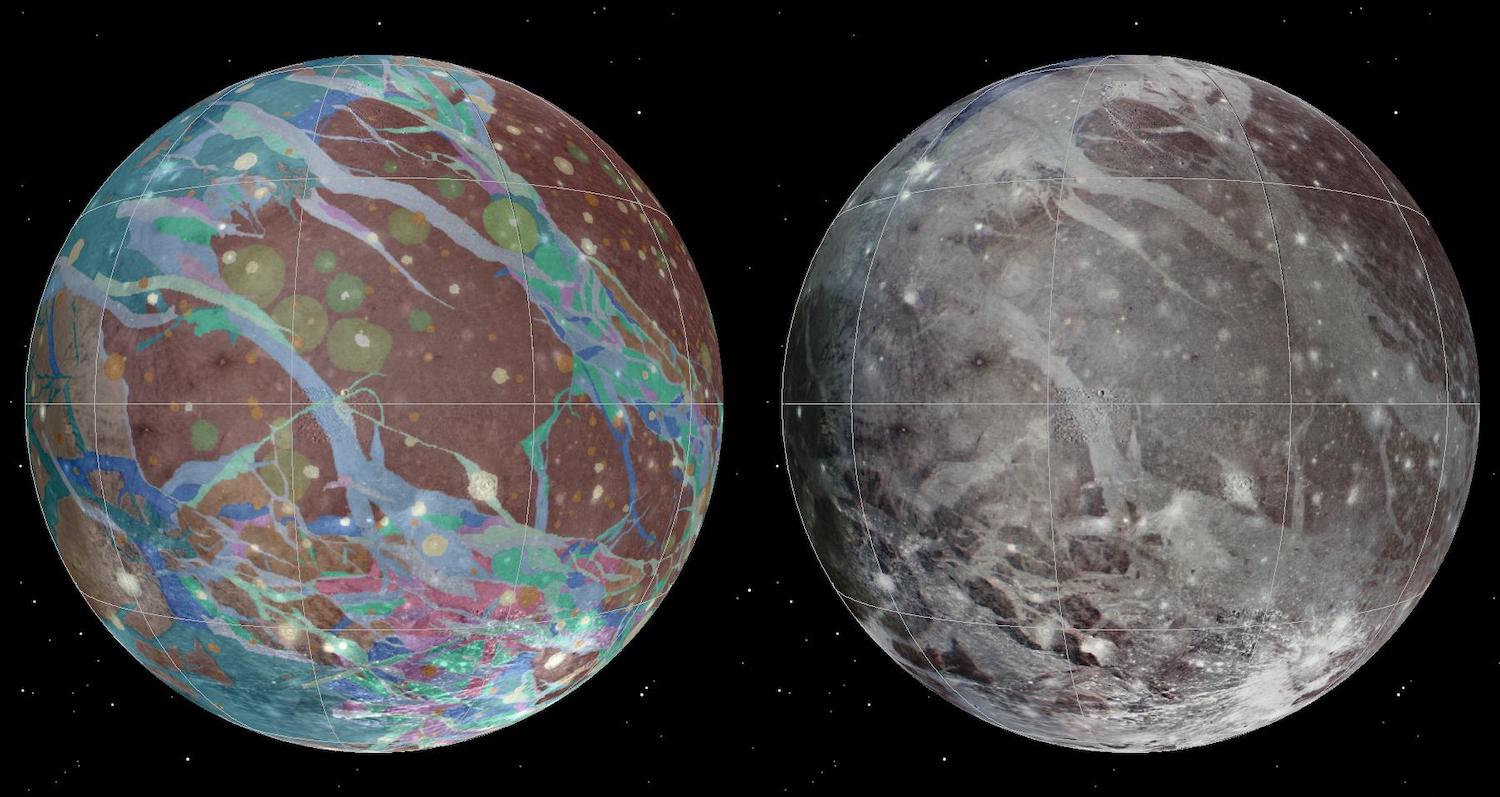NASA launched their Juno spaceship a decade ago. After flying by Jupiter a few times, the probe has recently turned its attention towards the most interesting few of Jupiter's 79 moons. It will check out Europa—thin oxygen atmosphere, water-ice crust—in 2022, and Io—the most geologically active orb in our solar system—in 2024. Europa and Io are great, definitely top-10 moons in the solar system, but six months ago, Juno completed a flyby of Ganymede, the largest moon in the entire solar system and the queen of the Jovian satellites.
Ganymede's stats are impressive: It's the ninth-largest object in the solar system, it's probably got more water than Earth, and it's big and internally complicated enough that it has its own magnetic field. No other moon in the solar system produces its own magnetism, and though Jupiter's field is so big that Ganymede's is not altogether independent, studying the nature of the magnetism and its relationship to the moon's atmosphere could yield some important answers about Ganymede's formation and its utility to future solar system explorers. Juno's been sending pictures back to NASA's Jet Propulsion Laboratory, pictures made with infrared light that allow the probe to "see" under the surface.
To map magnetic activity fields, Juno uses something they call the Waves instrument—scientists love unsubtle names, and the next mission to the Jovian neighborhood will be Europe's Jupiter Icy Moon Explorer (JUICE)—to sense radio and plasma waves. These data were then converted by NASA into an audio track, which sounds like an alien whistling inside of a wind tunnel. I'm glad NASA released important new scientific data in the spookiest possible format.
"This soundtrack is just wild enough to make you feel as if you were riding along as Juno sails past Ganymede for the first time in more than two decades," said Juno Principal Investigator Scott Bolton. "If you listen closely, you can hear the abrupt change to higher frequencies around the midpoint of the recording, which represents entry into a different region in Ganymede's magnetosphere."
That's a very complicated way to say, Check out this noise we picked up from the alien colony living in Ganymede's subsurface ocean, but I appreciate the cool remix.






